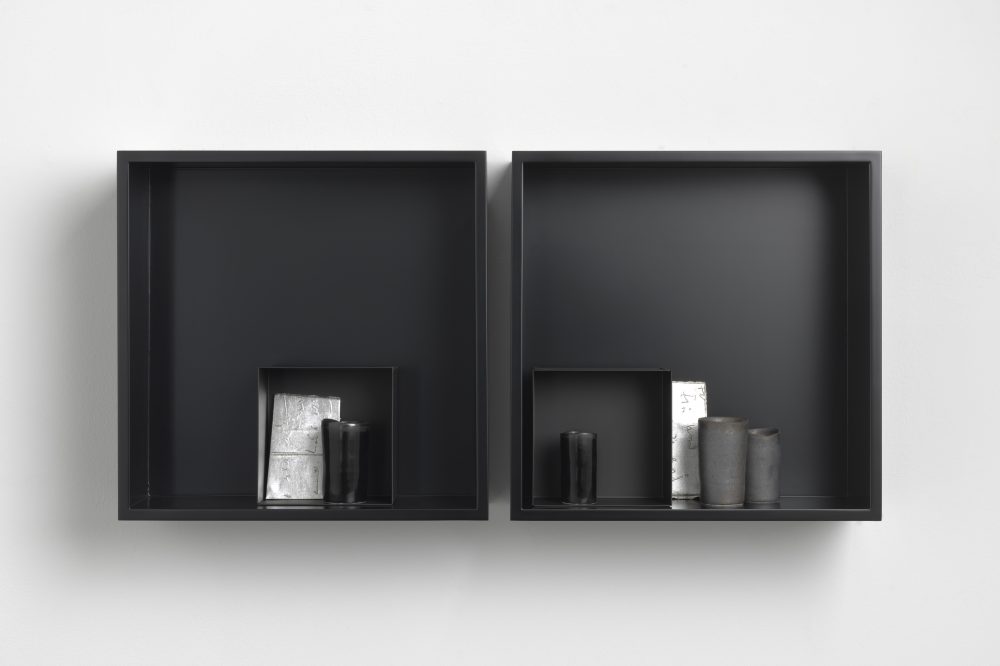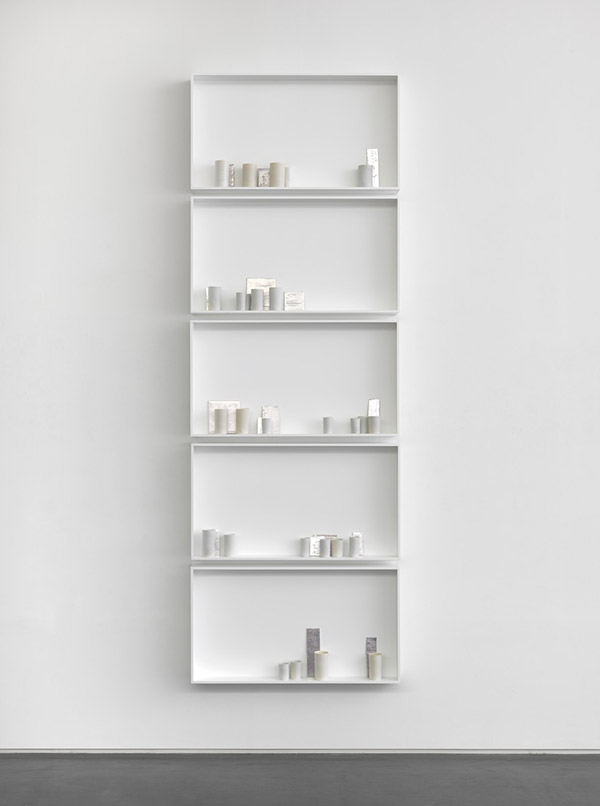ART CITIES:San Francisco-Edmund de Waal
 Edmund de Waal (Edmund Arthur Lowndes de Waal), is best known for his large scale installations of porcelain vessels. Much of Edmund’s recent work has been concerned with ideas of collecting and collections, how objects are kept together, lost, stolen or dispersed. His work comes out of a dialogue between Minimalism, Architecture and Music, and is informed by his passion for literature.
Edmund de Waal (Edmund Arthur Lowndes de Waal), is best known for his large scale installations of porcelain vessels. Much of Edmund’s recent work has been concerned with ideas of collecting and collections, how objects are kept together, lost, stolen or dispersed. His work comes out of a dialogue between Minimalism, Architecture and Music, and is informed by his passion for literature.
By Efi Michalarou
Photo: Gagosian Gallery Archive
From simple pairs to complex installation of small objects, Edmund de Waal draws inspiration from many sources, including the poetry of Paul Celan and the musical compositions of John Cage and reveal the ways in which simple forms act as repositories of human experience. Edmund de Waal’s first exhibition in San Francisco is entitled “the poems of our climate”. The new body of work brings together porcelain vessels with fragments of text by poets including Emily Dickinson, John Cage, Rilke and Wallace Stevens. De Waal has referenced poetry in his work for over 20 years but, as he describes it, “here I’m trying to come closer to what it feels like to remember a poem, to carry it with you through the decades, a phrase or image coming into your life and making the world feel denser with possibility”. On view for the first time, the new works in the exhibition bring poetry and porcelain vessels together in both physical and conceptual proximity. The cylindrical forms are arranged at intervals, forming topographies that resemble lines on a page or music in a score. Made in black or white, some vitrines recall Kazimir Malevich’s “Black Square” (1915), in which the pictorial representation of reality was abandoned for pure abstract form. De Waal’s installations have long incorporated lines and fragments of poetry in their titles, signaling affinities, inspirations, and connections to the literary form. The title of the exhibition is taken from a 1942 poem by Wallace Stevens, in which language is reduced to basic functions, creating an atmospheric stillness within the poem. On minute shards and tiles of porcelain, de Waal inscribed lines of the poetry that has echoed through his life and guided the creation of his pots and vessels. By emphasizing the tile’s literal capacity as script-bearing object, he links the tactile nature of porcelain to the concrete, symbolic nature of poetry, a written medium that works in auditory and associative ways. De Waal’s metaphysical translations capture the fleeting images of poetry and the immutability of text, giving a fragmentary, tangible form to the shape of a poem on a page, the movement between two lines, the hesitancies, caesuras, or intervals.
Info: Gagosian Gallery, 657 Howard Street, San Francisco, Duration: 20/9-8/12/18, Days & Hours: Mon-Sat 10:00-18:00, https://gagosian.com

